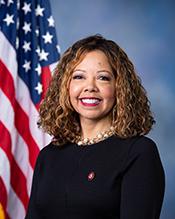H.R. 2159: Count the Crimes to Cut Act of 2025
This bill, known as the Count the Crimes to Cut Act of 2025, aims to improve transparency regarding federal criminal offenses. Here's a breakdown of what the proposed legislation entails:
Definitions
The bill defines two types of offenses:
- Criminal Regulatory Offense: A federal regulation enforceable by criminal penalties.
- Criminal Statutory Offense: A criminal offense defined by federal law.
Reports on Criminal Offenses
Within one year of the bill's enactment, the Attorney General is required to provide a detailed report on:
- Criminal Statutory Offenses:
- A complete list of all federal criminal statutory offenses, along with their elements.
- For each listed offense:
- The potential penalties.
- The number of prosecutions carried out by the Department of Justice over the past 15 years.
- The mens rea requirement, which refers to the intention or knowledge of wrongdoing that constitutes part of a crime.
- Criminal Regulatory Offenses:
- Reports from heads of federal agencies that include:
- A list of all criminal regulatory offenses their agency can enforce.
- For each regulatory offense:
- The potential penalties for violations.
- The number of violations referred to the Department of Justice for prosecution over the past 15 years.
- The mens rea requirement related to each offense.
- Reports from heads of federal agencies that include:
Agencies Involved
The bill specifies various federal agencies responsible for submitting the reports on criminal regulatory offenses. These include, but are not limited to:
- Department of Agriculture
- Department of Commerce
- Department of Education
- Department of Energy
- Department of Health and Human Services
- Department of Homeland Security
- Department of Housing and Urban Development
- Department of the Interior
- Department of Labor
- Department of Transportation
- Department of the Treasury
- Environmental Protection Agency
- Securities and Exchange Commission
- And others as mentioned in the legislation.
Public Access and Index
Within two years following the bill's enactment, the Attorney General must create a publicly accessible index of all criminal statutory offenses and make it available on the Department of Justice's website. Similarly, each federal agency listed in the legislation must develop its own public index of criminal regulatory offenses and provide access to it online.
Financial Implications
The bill includes a provision stating that it does not mandate or authorize any funding appropriations, implying that the efforts to fulfill this mandate should be accommodated within existing agency budgets.
Relevant Companies
None found
This is an AI-generated summary of the bill text. There may be mistakes.
Sponsors
5 bill sponsors
Actions
4 actions
| Date | Action |
|---|---|
| Jun. 10, 2025 | Committee Consideration and Mark-up Session Held |
| Jun. 10, 2025 | Ordered to be Reported in the Nature of a Substitute by Voice Vote. |
| Mar. 14, 2025 | Introduced in House |
| Mar. 14, 2025 | Referred to the House Committee on the Judiciary. |
Corporate Lobbying
0 companies lobbying
None found.
* Note that there can be significant delays in lobbying disclosures, and our data may be incomplete.
Potentially Relevant Congressional Stock Trades
No relevant congressional stock trades found.




